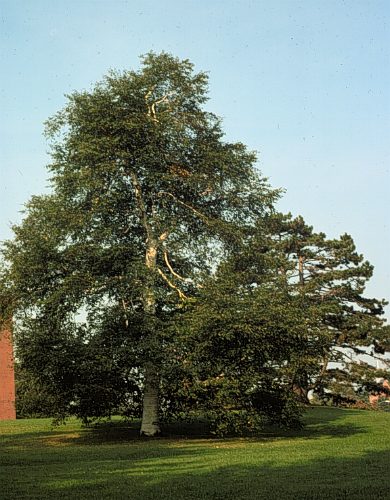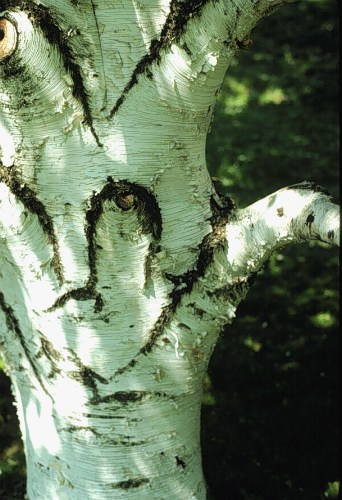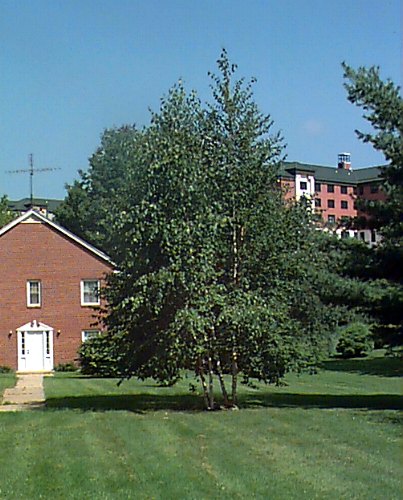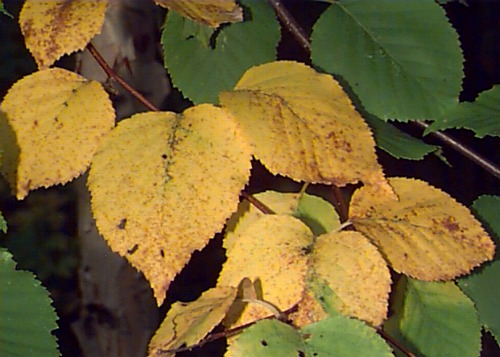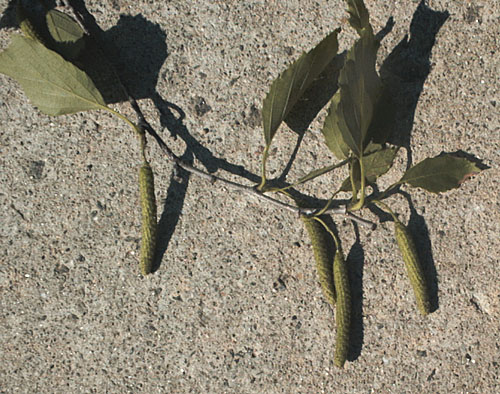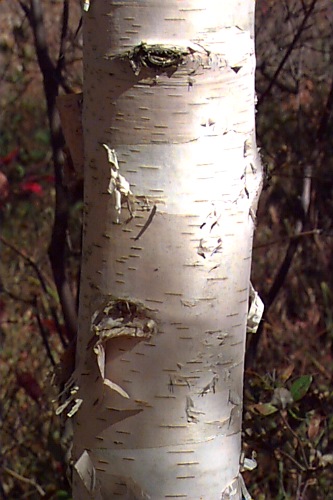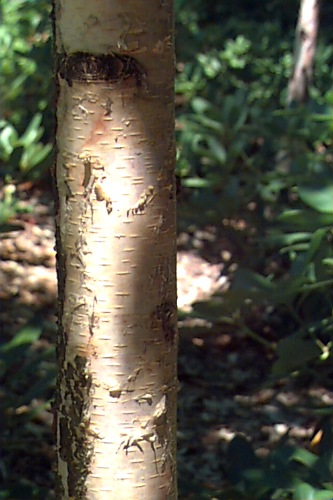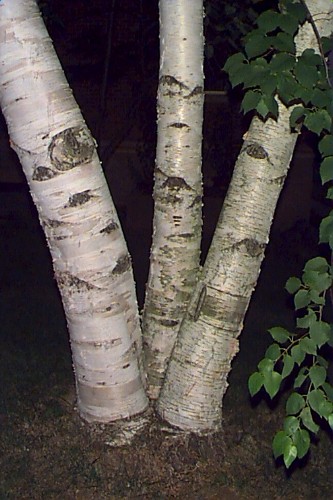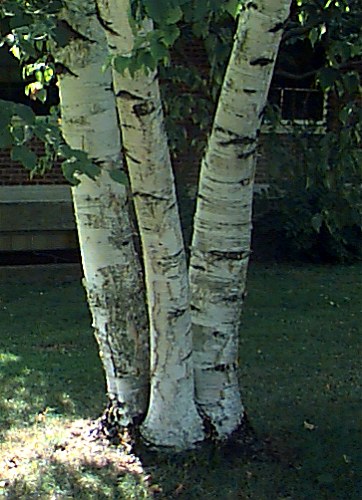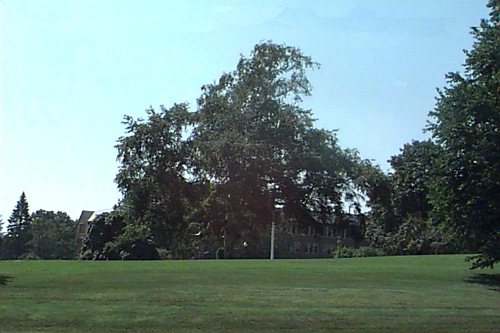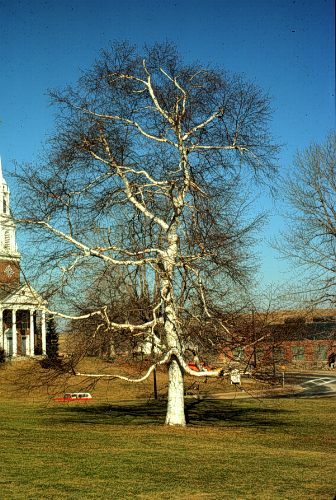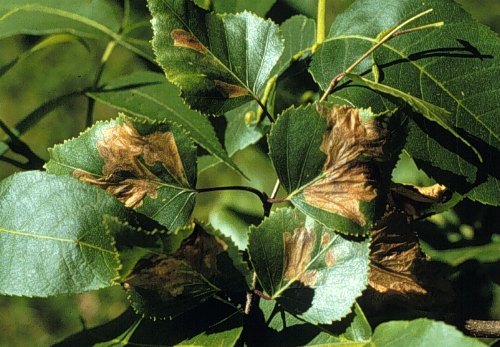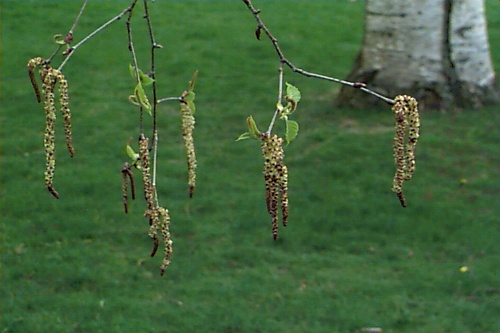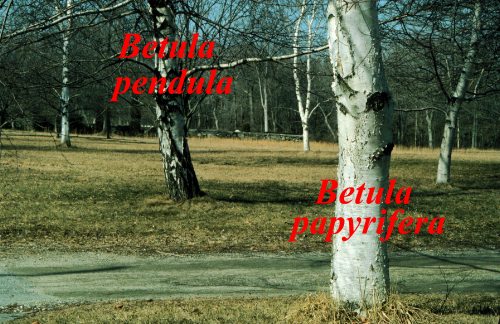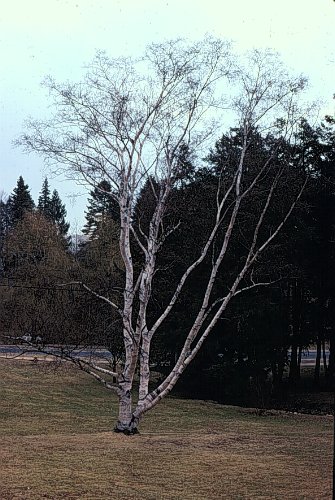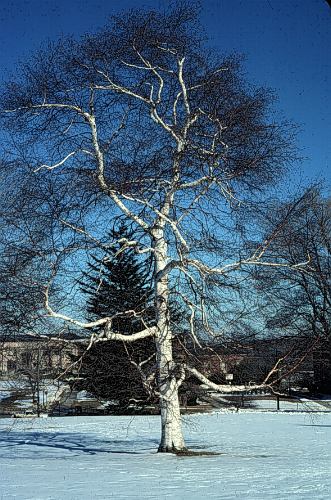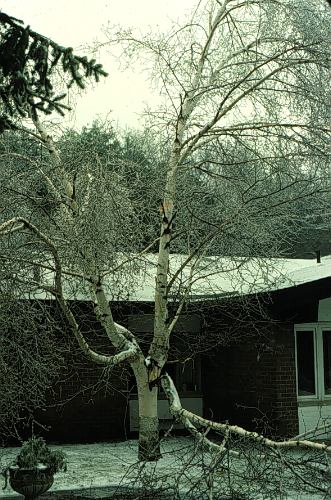Betula papyrifera
Paper Birch, White Birch
Betulaceae
ExpandHabitat
- the most widely distributed (east to west) of all North American birches
- northern North America, Labrador to Alaska, south into Northern Rocky Mountains, northern plains states and Pennsylvania
- zone 2
Habit and Form
- a deciduous, medium-sized tree
- 50' to 70' tall
- more or less pyramidal when young
- older trees become oval to rounded, with increasing irregularity in shape
- individuals have single trunks, but nurseries often grow them in groups of 3 or 4 ("clump birches") individual seedlings planted together in a common container
- fast growing, especially when young
- typically branched to a few feet above the ground in open exposures
- texture is medium
Summer Foliage
- alternate, ovate, simple leaves, 2" to 4" long and 1.5" to 3" wide
- often with an acuminate or pointed tip
- leaf base either acute or heart-shaped
- color is a dull, dark green above and paler on the underside
Autumn Foliage
- clear bright yellow
- typically dependable and showy
Flowers
- 2" to 4" long catkins, usually in 3's and some in pairs (male). Female catkins 1" to 1.5" long
- blooming in early spring
- prior to bloom, catkins are shorter
- little ornamental value
Fruit
- catkins, 1" to 1.5" long, composed of nutlets
- no ornamental importance
Bark
- young branches show smooth, reddish-brown bark with horizontal lenticels
- bark becoming papery, chalky white after about 4 seasons
- bark exfoliates or peels in strips to expose orange inner bark
- on very mature trunks, the white is mixed with rough, black patches
- probably the best white bark birch. The bark remains white longer than B. pendula and turns white relatively quickly on young branches.
Culture
- best adapted to cooler climates
- does poorly in high summer heat, especially root zone heat
- fairly soil adaptable, often found growing in sandy, gravely soils. Prefers well-drained, slightly acid sandy loam soils
- easy to transplant and establish from container or B&B
- not tolerant of pollution or difficult sites
- full sun
- avoid spring pruning to prevent bleeding
Landscape Use
- for decoration from showy bark on fall color
- as a lawn tree or specimen
- in parks, on campuses, generally not for inner city
- effective in small groupings
- shade seems to be light enough to allow turf to survive underneath
Liabilities
- bronze birch borer can be a serious problem and often hits trees just as they enter their peak in the landscape. Not as bad as B. pendula
- can get leaf miner, but not as badly as B. populifolia
- not tolerant of harsh conditions or heat
- bark can be slow to turn white for the impatient
- vandalism of the bark by carving of ones initials, leaving black scars
ID Features
- white bark that is chalky and exfoliates (compare to (B. pendula whose bark does not exfoliate)
- catkins in 2's or 3's and fatter than other 3-catkin species like B. nigra and B. pendula
Propagation
- by seed
- cuttings can be tricky to root and overwinter
Cultivars/Varieties
There is considerable variation across the geographic range, but few selections have made the leap to commercial acceptance or availability.
'Chickadee' - A fastigiate selection with good white bark.
'Snowy' (Snowy™) - A selection with handsome white bark and purported resistance to borers. Also appears to grow quickly as a young plant.

